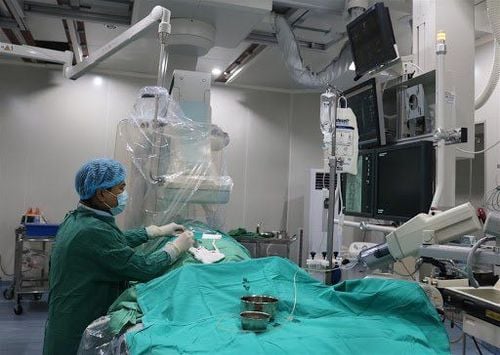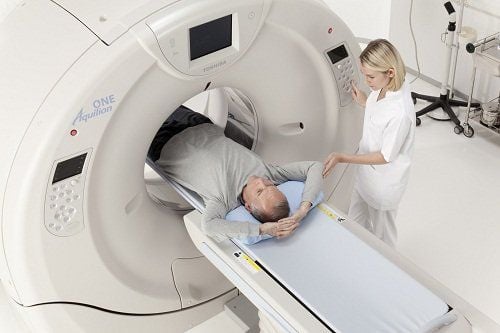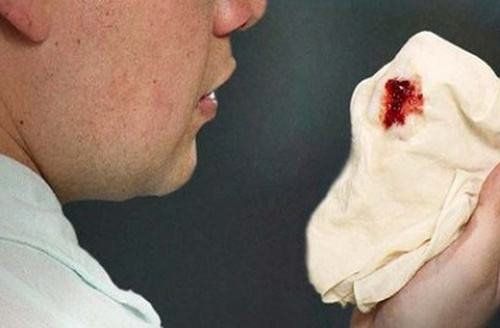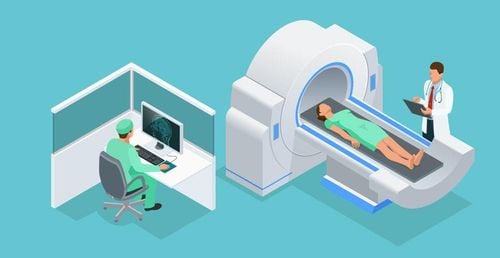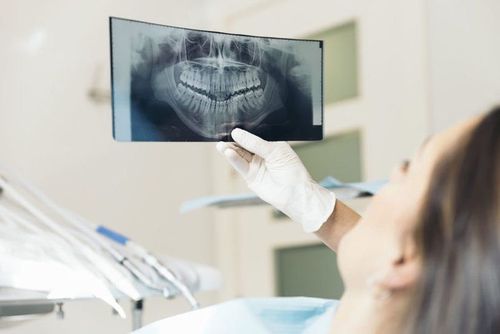This is an automatically translated article.
The article is expertly consulted by Master, Resident, Specialist I Trinh Le Hong Minh - Radiologist - Radiology Department - Vinmec Central Park International General Hospital.The bronchial artery is the organ that supplies nutrients and oxygen to the lungs. Digital erasure of the bronchial artery background will help doctors collect images of this organ for examination and treatment.
1. What is bronchial arteriography?
The bronchial artery supplies blood to the bronchi and connective tissue of the lungs. They connect with branches of the pulmonary artery and together supply blood to the viscera of the lung. Although there are many variations, it is common for the bronchial artery to have two branches, one to the left lung and one to the right lung.Digital bronchoscopy is a form of image collection through the use of iodinated contrast agents to visualize the bilateral bronchopulmonary arteries. From this, bronchial vascular disease can be detected, which is sometimes caused by anastomoses of the internal thoracic, subclavian, or intercostal arteries.
2. In what cases is digital imaging to erase the bronchial artery background?

Coughing up blood suspected of bronchiectasis. Assess tumor blood supply. Angiography in preparation for lung transplantation. Angiography to serve for interventional radiology. Traumatic diseases with suspected bronchial vascular damage. Chronic bronchiectasis with suspected bronchial vasculitis.
3. Contraindicated for digitizing bronchial artery background removal for which cases?
Digitized bronchoscopy is contraindicated in patients with coagulopathy, a history of obvious allergy to iodinated contrast agents, renal failure, and pregnancy. However, this procedure has no absolute contraindications for any particular case.4. What does the patient need to prepare for this procedure?
Before the procedure, the patient needs to fast for 6 hours, but the patient can still drink water, but it is necessary to ensure that the amount of water is less than 50 ml. In addition, the patient must also have a clear understanding of the digital imaging procedure to erase the bronchial artery background so that he can coordinate with the doctor.At the intervention room, the patient lies on his back, installing a monitor to monitor breathing, pulse, blood pressure, electrocardiogram, SpO2. Disinfect the area where the procedure is to be performed and cover with a sterile cloth with holes in it. Some special cases will require the use of sedation or some other appropriate measure.
5. Steps to conduct digital scan to erase the bronchial artery background
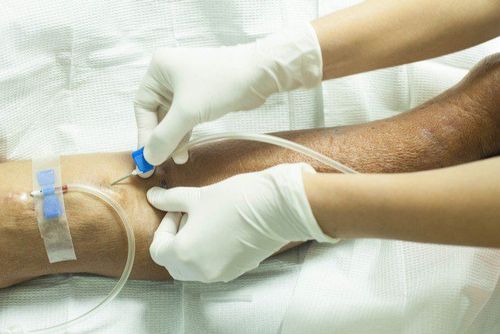
Step 2: Select the technique to use and the inlet of the catheter The most commonly used technique is Seldinger. With this technique, the inlet of the catheter can be some of the following: femoral artery, axillary artery, brachial artery, radial artery. If there are no problems, in most cases the femoral artery will be used, only if this is not possible should other access routes be used.
Step 3: Diagnostic angiogram After that, disinfect, anesthetize the puncture site, then poke the needle and insert the tube into the artery. Insert the catheter into the inferior aorta, then select the bilateral bronchial arteries, at the level of the T4-5 thoracic vertebrae, and then inject the drug with a pump volume of 6 ml, at a rate of 1.5-2 ml/s.
In some cases, it is necessary to conduct angiography of the superior intercostal arteries, intercostal arteries, internal mammary arteries, and inferior diaphragmatic arteries to find out the damaged collateral circulation.
After completing the imaging process and getting satisfactory results, the doctor will remove the catheter and catheter and then apply pressure directly on the needle puncture site for about 15 minutes to stop the bleeding. Finally, apply compression for 6 hours or use an intravascular closure device.
Bronchial artery is an important part, digital imaging procedure to erase the bronchial artery background will help doctors get basic images to serve the process of examination and treatment for patients.
Any questions that need to be answered by a specialist doctor as well as if you have a need for examination and treatment at Vinmec International General Hospital, please book an appointment on the website to be served.
Please dial HOTLINE for more information or register for an appointment HERE. Download MyVinmec app to make appointments faster and to manage your bookings easily.
SEE MOREDigital imaging to erase the background and bronchial nodes Digital scan to erase the background and intervene the mesenteric vessels Digitalize to erase the brain arteries





